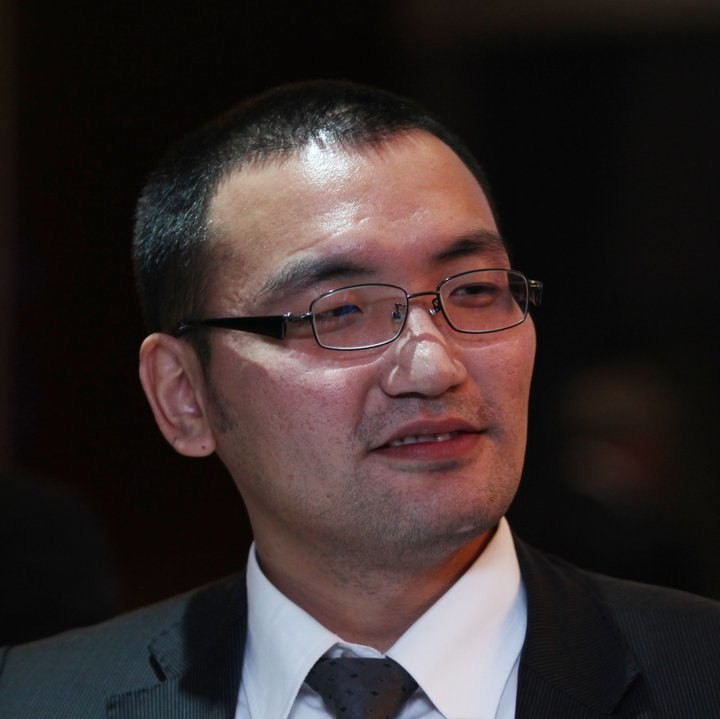Mongolian Stock Exchange Opens To Institutions ETFs And Mutual Funds
Post on: 8 Апрель, 2015 No Comment

Follow Comments Following Comments Unfollow Comments
Mongolia is a country with natural resource wealth that holds sizable per capita GDP possibilities for a national population of roughly 3 million people. Since the discovery of the world class Oyu Tolgoi copper-gold mine in 2001, Mongolia has had a back and forth struggle between populist national interests and welcoming laissez-faire policies dating back to the passage of a 68% windfall profit tax passed in 2005 and its annulment in 2009. The back and forth continues this year with moves forward towards truly opening up the Mongolian Stock Exchange (MSE) to foreign ETFs, mutual funds and institutions for the first time.
Saruul Ganbaatar, outgoing Deputy CEO of the MSE after three years on the job, was interviewed on Skype to provide a sense for where the legal changes are taking Mongolia and why investors should believe there is no going backward after the government of Mongolia’s recent legal changes.
Jon Springer: You went on road shows around the world promoting the MSE recently. What was your message at the road shows?
Saruul Ganbaatar: Our key message entailed that Mongolia is going in the right direction. Mongolia abolished some of the controversial laws such as the Strategic Entities Foreign Investment Law (SEFIL) and the old Foreign Investment Law. The parliament replaced them with one law that governs the investment environment in Mongolia, the new Investment Law. At the same time, this past year we put through a new rendition of the Securities Market Law and a new Investment Fund Law .
These are some of the sizable developments towards attracting capital to Mongolia. The Investment Law took effect on November 1, 2013. The Securities Market Law and Investment Fund Law took effect on January 1, 2014. So, we met with institutional investors from Hong Kong to New York to let investors recognize that Mongolia is open for business and that the country is looking to continually build a sustainable environment for investments. The new investment law has laid out some specific tax incentives and non-tax incentives for investments. There is also a specific clause in the law that outlines protective measures of the investors’ interests in Mongolia. The new securities law also brings in more transparency for Mongolian companies and their reporting requirements.
For the exchange, we will have a new clearing, settlement and custody environment. For 22 years since the formation of the MSE, the market was prefunded. With the new law, we are moving to the T+3 standard, which is adopted around the globe and is a crucial arrangement that will allow sophisticated institutional investors and mutual funds from overseas to begin investing in Mongolian listed companies.
Springer. Foreigners could invest on the MSE before. Do these laws fundamentally change the market in any way?
Ganbaatar. In most countries, it’s a common practice that, whenever institutional investment funds channel funds into the countries’ securities markets, they hold both securities and monetary assets in sophisticated A-rated custodian banks. The adoption of a newly amended law introduces a much-needed legal framework for the creation and operation of local and sub-custodian banks. We now have the necessary clauses in the Securities Market Law, and necessary regulations, which have been drafted over the last 4 months, to go ahead with custodian relationships that create the necessary infrastructure to attract institutional money to Mongolia.
We are also bringing in the legal concepts of nominee and beneficial ownership that haven’t existed here before, which sets out the groundwork for funds and most global custodian banks to start forming partnerships in the Mongolian marketplace. The Investment Fund Law was also drafted in-line with the Securities Exchange Act and the Investment Company Act in the United States. It puts in place strict standards and regulations for managing public funds and provides a description of the range of securities investments that mutual funds, ETFs, closed-end funds and private investment vehicles are allowed to invest in.

Springer. Did the Financial Regulatory Commission (FRC) change laws this year as well?
Ganbaatar. The FRC together with the MSE has redrafted 22 regulations in line with the new Securities Market Law. An interesting thing to note is that the new listing rules of the MSE and the FRC will require that financial statements be filed in both English and Mongolian, which will help provide investor confidence.
Springer. Do the new regulations make dual-listings on the MSE and international stock exchanges possible?
Ganbaatar. Yes, we are bringing new tradable securities to our markets that are common elsewhere: options, futures, depository receipts (DRs) and warrants. The introduction of DRs is an interesting new addition. It will provide local issuers with opportunities to float on foreign exchanges and execute those transactions in either shares or depositary receipts. DRs appear to be attractive addition for local Mongolian companies listed in overseas markets, for the newly amended regulations will open up opportunities of having straight access to our domestic pool of investors.
Springer. The Foreign Investment Law of 2012 (known as SEFIL) was a rushed law in the run-up to 2012′s summer elections. How is this law different?
Ganbaatar. The Investment Law is making bold steps to attract capital to Mongolia. This law makes no distinction between foreign investors and domestic investors. The old SEFIL had some limitations for foreigners with regard to investing in mining, finance, banking and telecommunications sectors. The only restrictions remaining now are in connection to state-owned entities.














